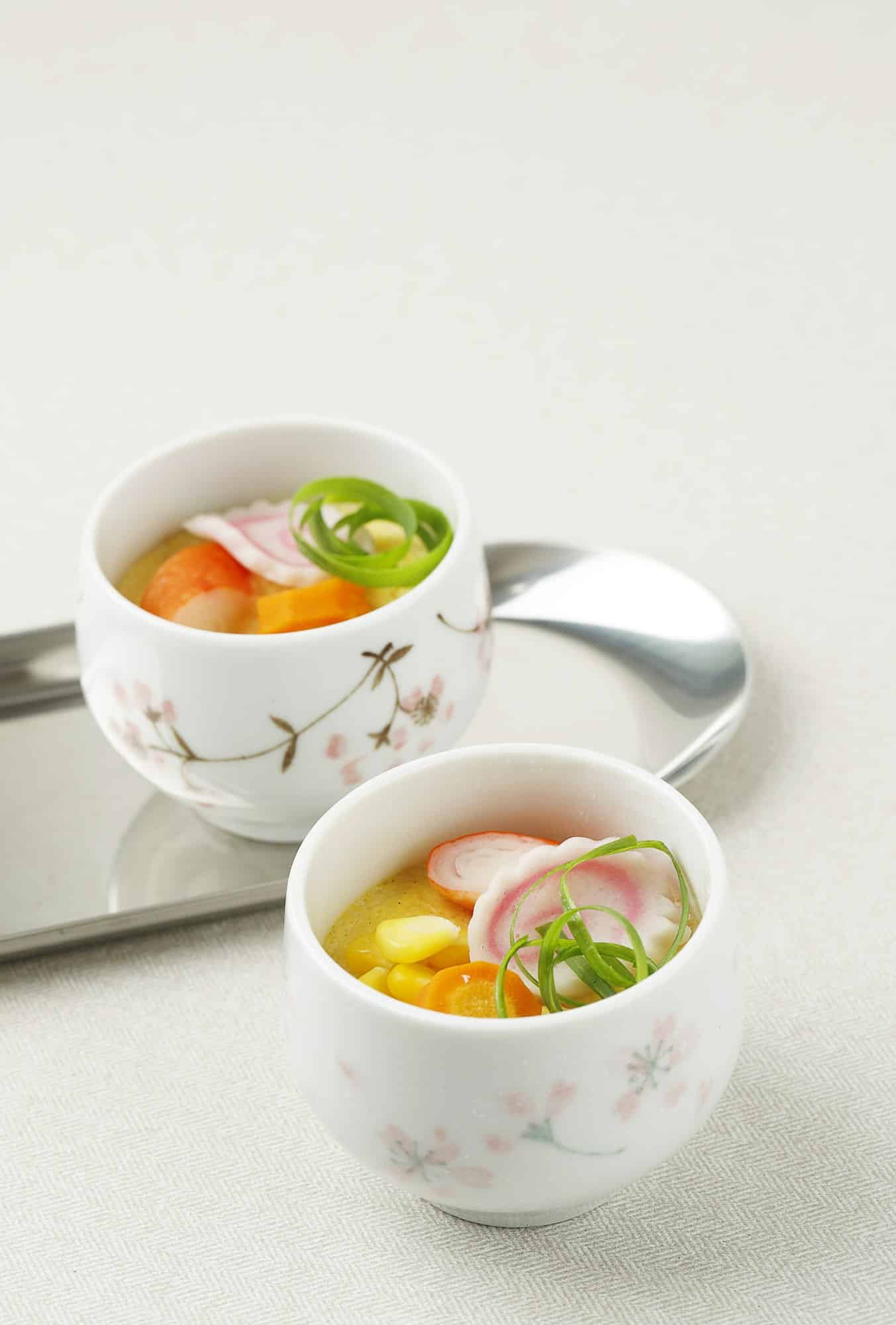What’s the Best Method for a Silky Japanese Chawanmushi with Shiitake Mushrooms?

When it comes to Japanese cuisine, the subtlety and sophistication of dishes often get overlooked. However, the simplicity of ingredients and the complexity of flavors they deliver is a testament to the culinary dexterity of the culture. This sophistication is clearly evident in chawanmushi. A smooth, delicate, steamed egg custard that’s savored not just for its flavor, but also for its texture. Chawanmushi is the epitome of Japanese culinary finesse. Let’s delve into the best method to achieve that perfectly silky chawanmushi, with a twist of shiitake mushrooms, guided by our key ingredients such as dashi, eggs, and soy sauce.
Chawanmushi – The Elements That Constitute Its Perfection
Before we commence preparing this dish, it’s essential to grasp the core elements behind chawanmushi. The first one is the dashi stock. The essence of umami in Japanese cuisine lies in this delicate stock that’s prepared from kombu seaweed and bonito flakes. This stock is the base for chawanmushi, lending it that distinct umami taste.
En parallèle : How to Cook the Perfect Italian Osso Buco with Gremolata?
The second key element is the egg. The ratio of the egg to the dashi stock is crucial for achieving that silky texture. Too many eggs and your chawanmushi will turn out more like an omelet. Not enough, and it will not set properly.
The third element is the mixture. The mixture of the eggs, dashi, and the other ingredients should be smooth and devoid of bubbles. Your chawanmushi’s final texture largely depends on this.
A lire aussi : How Can You Create a Vibrant Beetroot Hummus with Tahini and Garlic?
The Recipe – Bringing the Elements Together
Now that we have our elements lined up, let’s unite them to make our chawanmushi. In a bowl, combine two cups of cold dashi stock with three large eggs. The eggs will bond with the dashi, creating a smooth and even mixture. The cold stock stops the eggs from prematurely cooking, ensuring a perfect blend.
Now, add your flavorings – two tablespoons each of soy sauce and mirin. These will cut through the rich umami taste of the dashi, balancing the flavors. Stir gently to incorporate the seasonings into the mixture, avoiding the formation of bubbles.
Strain the mixture into a measuring cup or a bowl with a spout for easy pouring. Straining is a crucial step to eliminate any lumps or bubbles, ensuring the final texture of our chawanmushi is as smooth as silk.
The Cooking Process – Steaming to Perfection
The process of cooking chawanmushi is as essential as the ingredients that go into it. The dish is not baked but steamed, contributing to its unique texture.
Pour your strained mixture into chawanmushi cups or ramekins, filling them up to two-thirds. Now, place your choice of ingredients at the bottom of these cups. For this recipe, we will be using shiitake mushrooms. Their earthy flavor complements the umami of the dashi flawlessly.
Cover the cups with their lids or tightly wrap them with aluminum foil. Place the prepared cups in a steamer over medium heat. The water should be hot, not boiling, to produce a gentle steam.
Steam for about 10 to 15 minutes, or until the custard is set but still slightly jiggly. Overcooking will lead to a rubbery texture, while undercooking will leave it liquid. The chawanmushi should be like a soft custard, substantial yet wobbly.
The Final Touch – Serving Your Chawanmushi
Your silky chawanmushi is now ready, but the true appeal of this dish lies in its presentation. The custard, hidden under the lid or the foil, is a surprise for the diner to discover.
Open the lid or peel back the foil to reveal the custard. Its smooth, glossy surface should jiggle slightly when the cup is gently shaken. Garnish with a sprig of parsley or a small piece of lemon zest. The vibrant colors against the muted custard make for an enticing sight.
Serve immediately while the chawanmushi is still warm. The juxtaposition of the warm custard with the cool garnish will hit the right spot with every spoonful.
Remember, the key to a perfect chawanmushi lies in balance – the balance of flavors, texture, and even the temperature. It’s not just a dish; it’s an experience, an insight into the delicacy of Japanese cuisine. It showcases that sometimes, the simplest ingredients can create the most exquisite flavors.
Additional Ingredients – Enhancing the Umami Experience
Let’s not forget that chawanmushi is a savory custard. While the silky texture of the egg custard and the intense umami flavor from the dashi stock are the stars of the show, additional ingredients can elevate the dish to a higher level. In this recipe, we use shiitake mushrooms, but other traditional ingredients include kamaboko fish cake and gingko nuts.
The shiitake mushrooms add a layer of earthiness that complements the savory taste of the egg mixture. The mushrooms are added to the chawanmushi cups first before the egg mixture is poured in. This way, the flavors infuse into the custard during the steaming process.
Kamaboko, a type of colorful Japanese fish cake, could also be added for texture and visual appeal. It is usually placed with the shiitake in the chawanmushi cups.
Another popular addition is gingko nuts, which have a unique sweet and slightly bitter taste. They are boiled first to soften and remove any bitterness before being added to the cups.
Remember, all ingredients should be at room temperature before being added to the chawanmushi mix. This will ensure a consistent and even cooking during the steaming process, resulting in a perfectly set custard.
Perfecting the Steaming – A Matter of Time and Temperature
Once our chawanmushi cups are filled with the egg dashi mixture and the chosen ingredients, we move on to the steaming process. The steaming time and temperature are key to achieving that desired silky texture.
The chawanmushi should be steamed over medium heat. The water in the steamer should be hot but not boiling. A gentle steam is what we’re aiming for.
The cups are then covered with a lid or wrapped tightly with aluminum foil to prevent the formation of air bubbles in the custard during the steaming process.
The steaming time could vary based on the size of your chawanmushi cups. A general rule of thumb is 10 to 15 minutes. However, it’s always good to check a couple of minutes earlier.
The Japanese steamed eggs are done when they’re set but still slightly jiggly – we’re not aiming for a firm, solid texture. Overcooking the custard can result in a curdled, rubbery texture, while undercooking leaves it too liquid.
After steaming, let the chawanmushi rest for a few minutes before serving. This resting period allows the custard to cool slightly and firm up a bit more.
Conclusion – The Culinary Artistry of Chawanmushi
The art of making chawanmushi is about balance and subtlety. The balance of flavors between the umami dashi broth, the delicate steamed egg custard, and the earthy shiitake mushrooms. The subtlety of the steaming process, that perfect window of time minutes when the custard is just set but still wobbly.
Remember, every spoonful of chawanmushi is meant to be savored. The smooth texture, deep umami flavor, and the surprise of the added ingredients should all be relished.
With these detailed steps, you now have a guide to creating the perfect chawanmushi at home. It might seem daunting at first, but with practice, this delicate dish can be mastered. The result is not just a delicious meal but also a deeper appreciation of the finesse and sophistication of Japanese cuisine.
Making chawanmushi is not just about cooking; it’s about creating an experience. With each step, you’re not just preparing a dish but also embracing a culture, a culinary tradition that values balance, simplicity, and understated elegance. So, roll up your sleeves, gather your ingredients, and embark on your chawanmushi journey.
